Comparing different scan tool models effectively involves evaluating their features, capabilities, and suitability for specific diagnostic needs. At CAR-TOOL.EDU.VN, we understand the importance of selecting the right scan tool for your automotive repair needs, whether you’re a seasoned technician or a DIY enthusiast. This guide will help you navigate the complexities of comparing scan tool models, ensuring you make an informed decision.
Contents
- 1. Understanding Scan Tool Types and Their Applications
- 1.1. Basic Code Readers
- 1.2. Enhanced Code Readers
- 1.3. Professional Scan Tools
- 1.4. OEM Scan Tools
- 2. Key Features to Consider When Comparing Scan Tools
- 2.1. Vehicle Coverage
- 2.2. Functionality
- 2.3. Ease of Use
- 2.4. Data Logging and Reporting
- 2.5. Wireless Connectivity
- 2.6. Durability and Build Quality
- 3. How to Compare Scan Tools Effectively
- 3.1. Define Your Needs
- 3.2. Research and Reviews
- 3.3. Compare Specifications
- 3.4. Consider Brand Reputation
- 3.5. Check for Software Updates
- 3.6. Evaluate Customer Support
- 3.7. Hands-On Testing
- 4. Common Mistakes to Avoid When Comparing Scan Tools
- 4.1. Overlooking Vehicle Coverage
- 4.2. Ignoring Functionality
- 4.3. Neglecting Ease of Use
- 4.4. Skipping Software Updates
- 4.5. Overlooking Customer Support
- 5. Specific Scan Tool Models and Their Comparison
- 5.1. Autel MaxiSys MS906BT
- 5.2. Launch X431 V+
- 5.3. Snap-on Zeus
- 5.4. Bosch ADS 625
- 6. The Role of CAR-TOOL.EDU.VN in Your Scan Tool Selection
- 6.1. Detailed Product Information
- 6.2. Expert Reviews and Recommendations
- 6.3. User Feedback and Ratings
- 6.4. Latest Updates and Promotions
- 7. Practical Examples of Scan Tool Comparisons
- 7.1. Comparing Basic Code Readers
- 7.2. Comparing Enhanced Code Readers
- 7.3. Comparing Professional Scan Tools
- 8. Advanced Diagnostic Techniques Using Scan Tools
- 8.1. Reading and Interpreting Freeze Frame Data
- 8.2. Analyzing Live Data Streams
- 8.3. Performing Bi-Directional Tests
- 8.4. Using Special Functions
- 9. Future Trends in Scan Tool Technology
- 9.1. Cloud-Based Diagnostics
- 9.2. Artificial Intelligence (AI)
- 9.3. Augmented Reality (AR)
- 9.4. Integration with Mobile Devices
- 10. Maintaining and Updating Your Scan Tool
- 10.1. Keeping the Software Updated
- 10.2. Protecting the Tool from Damage
- 10.3. Replacing Worn Cables and Connectors
- 10.4. Calibrating Sensors
- FAQ Section
1. Understanding Scan Tool Types and Their Applications
Different scan tools cater to various needs, ranging from basic code reading to advanced diagnostics. Understanding the types available is the first step in comparing them effectively.
1.1. Basic Code Readers
These are entry-level tools designed for reading and clearing diagnostic trouble codes (DTCs). They are ideal for quick checks and basic maintenance.
- Functionality: Reads and clears DTCs, displays freeze frame data.
- Use Cases: Identifying common issues like a loose gas cap or a faulty sensor.
- Limitations: Limited advanced features, may not support all vehicle systems.
1.2. Enhanced Code Readers
Offering more capabilities than basic readers, these tools often include live data streaming and enhanced system diagnostics.
- Functionality: Reads and clears DTCs, live data streaming, some component testing.
- Use Cases: Diagnosing engine performance issues, ABS problems, and transmission faults.
- Limitations: May not support advanced functions like bi-directional controls or module programming.
1.3. Professional Scan Tools
These advanced tools are designed for comprehensive diagnostics and are used by professional technicians.
- Functionality: Reads and clears DTCs, live data streaming, bi-directional controls, module programming, and access to vehicle-specific data.
- Use Cases: Complex diagnostics, system reprogramming, and advanced troubleshooting.
- Limitations: Higher cost, requires training to use effectively.
1.4. OEM Scan Tools
Original Equipment Manufacturer (OEM) scan tools are designed specifically for a particular vehicle brand, offering the most comprehensive diagnostic capabilities.
- Functionality: Complete access to all vehicle systems, module programming, and OEM-level diagnostics.
- Use Cases: Dealership-level diagnostics and repairs.
- Limitations: High cost, limited to a single vehicle brand.
2. Key Features to Consider When Comparing Scan Tools
When comparing scan tool models, focus on features that align with your diagnostic needs and technical expertise.
2.1. Vehicle Coverage
Ensure the scan tool supports the makes and models of vehicles you work on.
- Domestic, Asian, European: Check if the tool supports a wide range of vehicle manufacturers.
- OBD I and OBD II Compatibility: Verify compatibility with older (OBD I) and newer (OBD II) vehicles.
- Specific Make/Model Support: Some tools offer enhanced diagnostics for specific makes and models.
2.2. Functionality
Evaluate the range of diagnostic functions offered by the scan tool.
- DTC Reading and Clearing: Essential for identifying and resolving issues.
- Live Data Streaming: Real-time data helps in diagnosing intermittent problems.
- Bi-Directional Controls: Allows you to command vehicle components for testing purposes.
- Module Programming: Enables reprogramming and updating of vehicle modules.
- Special Functions: Includes features like oil reset, TPMS reset, and electronic parking brake service.
2.3. Ease of Use
A user-friendly interface can significantly improve diagnostic efficiency.
- Intuitive Interface: Look for a clear and easy-to-navigate menu system.
- Color Display: A color screen improves visibility and data interpretation.
- Touchscreen: Touchscreen functionality can enhance usability.
- Software Updates: Ensure the tool supports regular software updates to maintain compatibility with newer vehicles.
2.4. Data Logging and Reporting
The ability to log and analyze data is crucial for diagnosing complex issues.
- Data Logging: Allows you to record live data for later analysis.
- Reporting: Generates diagnostic reports that can be shared with customers or colleagues.
- Printing: Some tools offer printing capabilities for instant reports.
2.5. Wireless Connectivity
Wireless connectivity options like Bluetooth or Wi-Fi can enhance flexibility and convenience.
- Bluetooth: Connect to a laptop or mobile device for data logging and analysis.
- Wi-Fi: Access software updates and online resources wirelessly.
2.6. Durability and Build Quality
A rugged and well-built scan tool can withstand the harsh environment of an automotive shop.
- Housing Material: Look for a durable housing material that can resist impacts and chemicals.
- Cable Quality: Ensure the cables are robust and resistant to wear and tear.
- Warranty: A longer warranty period indicates the manufacturer’s confidence in the product.
3. How to Compare Scan Tools Effectively
To effectively compare scan tools, follow a structured approach that considers your specific needs and budget.
3.1. Define Your Needs
Start by identifying the types of vehicles you work on and the diagnostic functions you require.
- Vehicle Types: Determine whether you need coverage for domestic, Asian, or European vehicles.
- Diagnostic Functions: Identify the specific functions you need, such as live data streaming, bi-directional controls, or module programming.
- Budget: Set a budget to narrow down your options and avoid overspending.
3.2. Research and Reviews
Gather information about different scan tool models through online reviews, forums, and professional recommendations.
- Online Reviews: Read reviews from other technicians and users to get insights into the tool’s performance and reliability.
- Forums: Participate in automotive forums to ask questions and get advice from experienced professionals.
- Professional Recommendations: Consult with experienced technicians or shop owners for their recommendations.
3.3. Compare Specifications
Create a comparison chart to evaluate the key features and specifications of different scan tool models.
| Feature | Scan Tool A | Scan Tool B | Scan Tool C |
|---|---|---|---|
| Vehicle Coverage | Domestic | Domestic, Asian | Domestic, European |
| Live Data Streaming | Yes | Yes | Yes |
| Bi-Directional Controls | No | Yes | Yes |
| Module Programming | No | No | Yes |
| Price | $200 | $500 | $1000 |
3.4. Consider Brand Reputation
Choose a scan tool from a reputable brand known for quality, reliability, and customer support.
- Autel: Known for its comprehensive diagnostic capabilities and user-friendly interface.
- Snap-on: A premium brand offering high-performance scan tools for professional technicians.
- Launch: Offers a wide range of scan tools for various needs and budgets.
- Bosch: A trusted brand with a long history of producing quality automotive tools and equipment.
3.5. Check for Software Updates
Ensure the scan tool supports regular software updates to maintain compatibility with newer vehicles and access the latest diagnostic features.
- Update Frequency: Check how often the manufacturer releases software updates.
- Update Cost: Determine whether updates are free or require a subscription.
- Coverage: Verify that updates include coverage for the vehicles you work on.
3.6. Evaluate Customer Support
Choose a scan tool with reliable customer support in case you encounter issues or need assistance.
- Technical Support: Check if the manufacturer offers technical support via phone, email, or online chat.
- Training Resources: Look for training materials, such as videos or manuals, to help you learn how to use the scan tool effectively.
- Warranty Support: Ensure the manufacturer provides a clear and comprehensive warranty policy.
3.7. Hands-On Testing
If possible, try out different scan tool models before making a purchase to see which one feels most comfortable and intuitive to use.
- Demo Units: Check if local automotive tool suppliers offer demo units for testing.
- Trade Shows: Attend automotive trade shows to see the latest scan tools in action and talk to manufacturers’ representatives.
- Borrow or Rent: Consider borrowing or renting a scan tool before buying it to ensure it meets your needs.
4. Common Mistakes to Avoid When Comparing Scan Tools
Avoid these common mistakes to ensure you make the right choice when comparing scan tools.
4.1. Overlooking Vehicle Coverage
Failing to check vehicle coverage is a common mistake that can lead to purchasing a scan tool that doesn’t support the vehicles you work on.
- Solution: Always verify vehicle coverage before buying a scan tool. Check the manufacturer’s website or consult with a sales representative to ensure compatibility.
4.2. Ignoring Functionality
Choosing a scan tool based solely on price without considering its functionality can result in a tool that doesn’t meet your diagnostic needs.
- Solution: Prioritize functionality over price. Identify the specific diagnostic functions you need and choose a scan tool that offers those features.
4.3. Neglecting Ease of Use
A scan tool with a complex or confusing interface can be frustrating to use and reduce diagnostic efficiency.
- Solution: Choose a scan tool with an intuitive and user-friendly interface. Look for features like a color display, touchscreen functionality, and a clear menu system.
4.4. Skipping Software Updates
Failing to update the scan tool’s software can result in compatibility issues and limited access to the latest diagnostic features.
- Solution: Ensure the scan tool supports regular software updates and keep the software up to date. Check the manufacturer’s website for update schedules and instructions.
4.5. Overlooking Customer Support
Choosing a scan tool from a manufacturer with poor customer support can be problematic if you encounter issues or need assistance.
- Solution: Choose a scan tool from a reputable brand known for quality and customer support. Check online reviews to see what other users say about the manufacturer’s support.
5. Specific Scan Tool Models and Their Comparison
Let’s delve into a comparison of specific scan tool models, highlighting their features and benefits.
5.1. Autel MaxiSys MS906BT
The Autel MaxiSys MS906BT is a popular choice among professional technicians due to its comprehensive diagnostic capabilities and user-friendly interface.
- Features:
- Extensive vehicle coverage for domestic, Asian, and European vehicles.
- Advanced functions including bi-directional controls and coding.
- Live data streaming and graphing.
- Wireless Bluetooth connectivity.
- One-year free software updates.
- Pros:
- User-friendly interface.
- Comprehensive diagnostic capabilities.
- Wireless connectivity.
- Cons:
- Higher price point.
5.2. Launch X431 V+
The Launch X431 V+ is known for its wide vehicle coverage and advanced diagnostic functions, making it a versatile tool for professional use.
- Features:
- Extensive vehicle coverage for over 100 vehicle brands.
- Advanced functions including bi-directional controls and ECU coding.
- Remote diagnostics capabilities.
- Two years of free software updates.
- Pros:
- Wide vehicle coverage.
- Advanced diagnostic functions.
- Remote diagnostics.
- Cons:
- Can be complex to use for beginners.
5.3. Snap-on Zeus
The Snap-on Zeus is a high-end scan tool designed for professional technicians who require top-of-the-line performance and reliability.
- Features:
- Comprehensive vehicle coverage.
- Advanced functions including bi-directional controls and module programming.
- Intelligent diagnostics with guided component tests.
- Wireless connectivity.
- Pros:
- Top-of-the-line performance.
- Intelligent diagnostics.
- Rugged build quality.
- Cons:
- Very high price point.
- Requires training to use effectively.
5.4. Bosch ADS 625
The Bosch ADS 625 is a reliable and versatile scan tool that offers a balance of features and affordability, making it a good choice for both professional and DIY users.
- Features:
- Extensive vehicle coverage.
- Advanced functions including bi-directional controls and coding.
- Cloud-based software updates.
- Integrated diagnostic database.
- Pros:
- Balance of features and affordability.
- Cloud-based software updates.
- Integrated diagnostic database.
- Cons:
- May not offer the same level of advanced functions as higher-end tools.
6. The Role of CAR-TOOL.EDU.VN in Your Scan Tool Selection
CAR-TOOL.EDU.VN offers detailed information and comparisons of various scan tools, helping you make an informed decision based on your specific needs.
6.1. Detailed Product Information
CAR-TOOL.EDU.VN provides comprehensive specifications, features, and reviews for a wide range of scan tools, enabling you to compare different models side by side.
6.2. Expert Reviews and Recommendations
Our team of automotive experts conducts thorough reviews and provides recommendations based on real-world testing and professional experience.
6.3. User Feedback and Ratings
CAR-TOOL.EDU.VN features user feedback and ratings, allowing you to learn from the experiences of other technicians and DIY users.
6.4. Latest Updates and Promotions
Stay informed about the latest scan tool models, software updates, and promotional offers through CAR-TOOL.EDU.VN.
7. Practical Examples of Scan Tool Comparisons
To further illustrate how to compare scan tools, let’s consider a few practical examples.
7.1. Comparing Basic Code Readers
If you’re looking for a basic code reader for simple diagnostics, compare models based on their vehicle coverage, ease of use, and price.
| Feature | Autel AutoLink AL319 | Innova 3100i |
|---|---|---|
| Vehicle Coverage | OBD II | OBD II |
| DTC Reading/Clearing | Yes | Yes |
| Live Data | Yes | Yes |
| Price | $50 | $70 |
Analysis: Both tools offer similar basic functionality, but the Innova 3100i may provide slightly more detailed live data.
7.2. Comparing Enhanced Code Readers
For enhanced code readers, focus on live data streaming, component testing, and special functions.
| Feature | Launch CRP129E | Autel MD808 Pro |
|---|---|---|
| Vehicle Coverage | Wide | Wide |
| Live Data Streaming | Yes | Yes |
| ABS/SRS Diagnostics | Yes | Yes |
| Oil Reset | Yes | Yes |
| Price | $200 | $230 |
Analysis: Both tools offer similar features, but the Autel MD808 Pro may have a slight edge in terms of special functions and user interface.
7.3. Comparing Professional Scan Tools
When comparing professional scan tools, consider advanced functions like bi-directional controls, module programming, and OEM-level diagnostics.
| Feature | Autel MaxiSys MS906BT | Snap-on Zeus |
|---|---|---|
| Vehicle Coverage | Wide | Wide |
| Bi-Directional Controls | Yes | Yes |
| Module Programming | Yes | Yes |
| OEM-Level Diagnostics | Limited | Yes |
| Price | $1200 | $8000 |
Analysis: The Snap-on Zeus offers superior OEM-level diagnostics but comes at a significantly higher price. The Autel MaxiSys MS906BT provides a good balance of features and affordability.
8. Advanced Diagnostic Techniques Using Scan Tools
Beyond basic code reading, scan tools enable advanced diagnostic techniques that can significantly improve troubleshooting efficiency.
8.1. Reading and Interpreting Freeze Frame Data
Freeze frame data captures the vehicle’s operating conditions when a DTC was triggered, providing valuable clues for diagnosis.
- Example: If a misfire code is present, freeze frame data can show the engine speed, load, and temperature at the time of the misfire, helping to identify the cause.
8.2. Analyzing Live Data Streams
Live data streams provide real-time information about various vehicle sensors and systems, allowing you to monitor their performance and identify anomalies.
- Example: Monitoring the oxygen sensor readings can help diagnose fuel mixture issues, while observing the ABS sensor data can help identify brake problems.
8.3. Performing Bi-Directional Tests
Bi-directional tests allow you to command vehicle components and observe their response, helping to isolate faulty parts.
- Example: Activating the fuel pump using a bi-directional test can confirm whether the pump is functioning correctly.
8.4. Using Special Functions
Special functions, such as oil reset, TPMS reset, and electronic parking brake service, can simplify maintenance tasks and reduce the need for manual procedures.
- Example: Performing an oil reset after an oil change ensures that the vehicle’s maintenance reminder system is properly reset.
9. Future Trends in Scan Tool Technology
Scan tool technology is constantly evolving, with new features and capabilities being introduced regularly. Staying informed about future trends can help you choose a scan tool that will remain relevant for years to come.
9.1. Cloud-Based Diagnostics
Cloud-based diagnostics offer access to vast databases of diagnostic information, remote diagnostics capabilities, and automatic software updates.
9.2. Artificial Intelligence (AI)
AI-powered scan tools can analyze diagnostic data and provide guided troubleshooting, helping technicians diagnose complex issues more efficiently.
9.3. Augmented Reality (AR)
AR technology can overlay diagnostic information onto the vehicle, providing technicians with a visual guide for repairs.
9.4. Integration with Mobile Devices
Scan tools are increasingly integrating with mobile devices, allowing technicians to access diagnostic data, perform tests, and generate reports using their smartphones or tablets.
10. Maintaining and Updating Your Scan Tool
Proper maintenance and regular software updates are essential for ensuring the longevity and accuracy of your scan tool.
10.1. Keeping the Software Updated
Regularly check for software updates and install them to maintain compatibility with newer vehicles and access the latest diagnostic features.
10.2. Protecting the Tool from Damage
Store the scan tool in a safe place and protect it from impacts, chemicals, and extreme temperatures.
10.3. Replacing Worn Cables and Connectors
Inspect cables and connectors regularly and replace them if they show signs of wear or damage.
10.4. Calibrating Sensors
Some scan tools require periodic calibration of their internal sensors to ensure accurate readings. Follow the manufacturer’s instructions for calibration.
FAQ Section
Q: What is the difference between a basic code reader and a professional scan tool?
A: A basic code reader reads and clears diagnostic trouble codes (DTCs), while a professional scan tool offers advanced functions like live data streaming, bi-directional controls, and module programming.
Q: How do I choose the right scan tool for my needs?
A: Consider the types of vehicles you work on, the diagnostic functions you need, your budget, and the tool’s ease of use.
Q: What is vehicle coverage, and why is it important?
A: Vehicle coverage refers to the makes and models of vehicles that a scan tool supports. It’s important to ensure the tool covers the vehicles you work on.
Q: How often should I update my scan tool’s software?
A: Check for software updates regularly and install them as soon as they are available to maintain compatibility and access the latest features.
Q: What are bi-directional controls?
A: Bi-directional controls allow you to command vehicle components and observe their response, helping to isolate faulty parts.
Q: What is live data streaming?
A: Live data streaming provides real-time information about various vehicle sensors and systems, allowing you to monitor their performance and identify anomalies.
Q: How important is customer support when choosing a scan tool?
A: Customer support is crucial in case you encounter issues or need assistance. Choose a scan tool from a reputable brand known for quality and support.
Q: Can I use a scan tool on any vehicle?
A: Most scan tools are compatible with OBD II vehicles (1996 and newer), but you should always check the vehicle coverage before purchasing a tool.
Q: What are some common mistakes to avoid when comparing scan tools?
A: Overlooking vehicle coverage, ignoring functionality, neglecting ease of use, skipping software updates, and overlooking customer support.
Q: Where can I find reliable information and comparisons of scan tools?
A: CAR-TOOL.EDU.VN offers detailed product information, expert reviews, user feedback, and the latest updates on scan tools.
Choosing the right scan tool requires careful consideration of your needs, budget, and the features that are most important to you. By following the guidelines in this guide and leveraging the resources available at CAR-TOOL.EDU.VN, you can make an informed decision and select a scan tool that will enhance your diagnostic capabilities and improve your efficiency. For personalized assistance and expert advice, contact us at 456 Elm Street, Dallas, TX 75201, United States, or via Whatsapp at +1 (641) 206-8880. Visit our website at CAR-TOOL.EDU.VN to explore our extensive range of automotive tools and equipment.
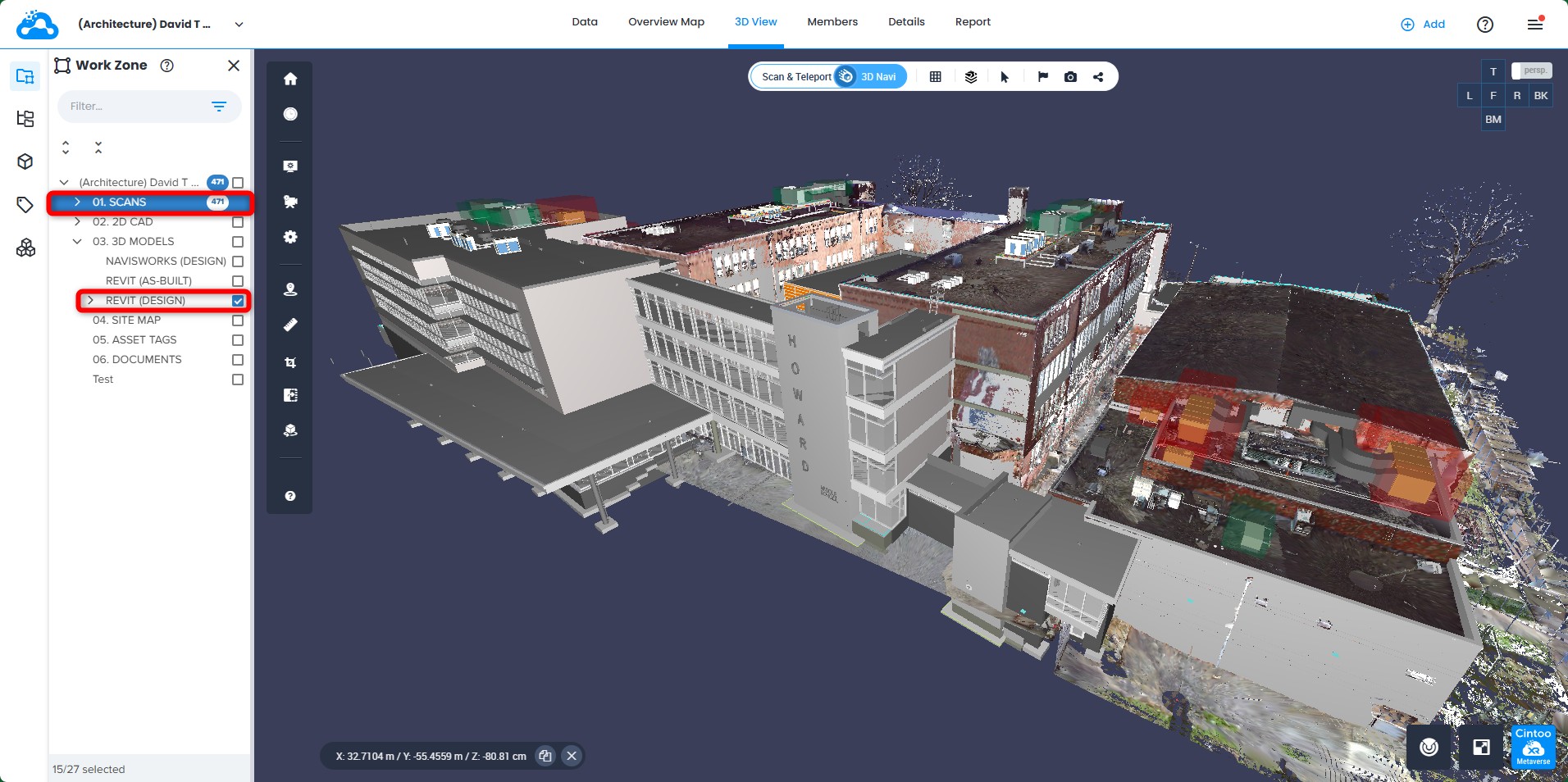 Selecting Work Zones for Scan Comparison
Selecting Work Zones for Scan Comparison
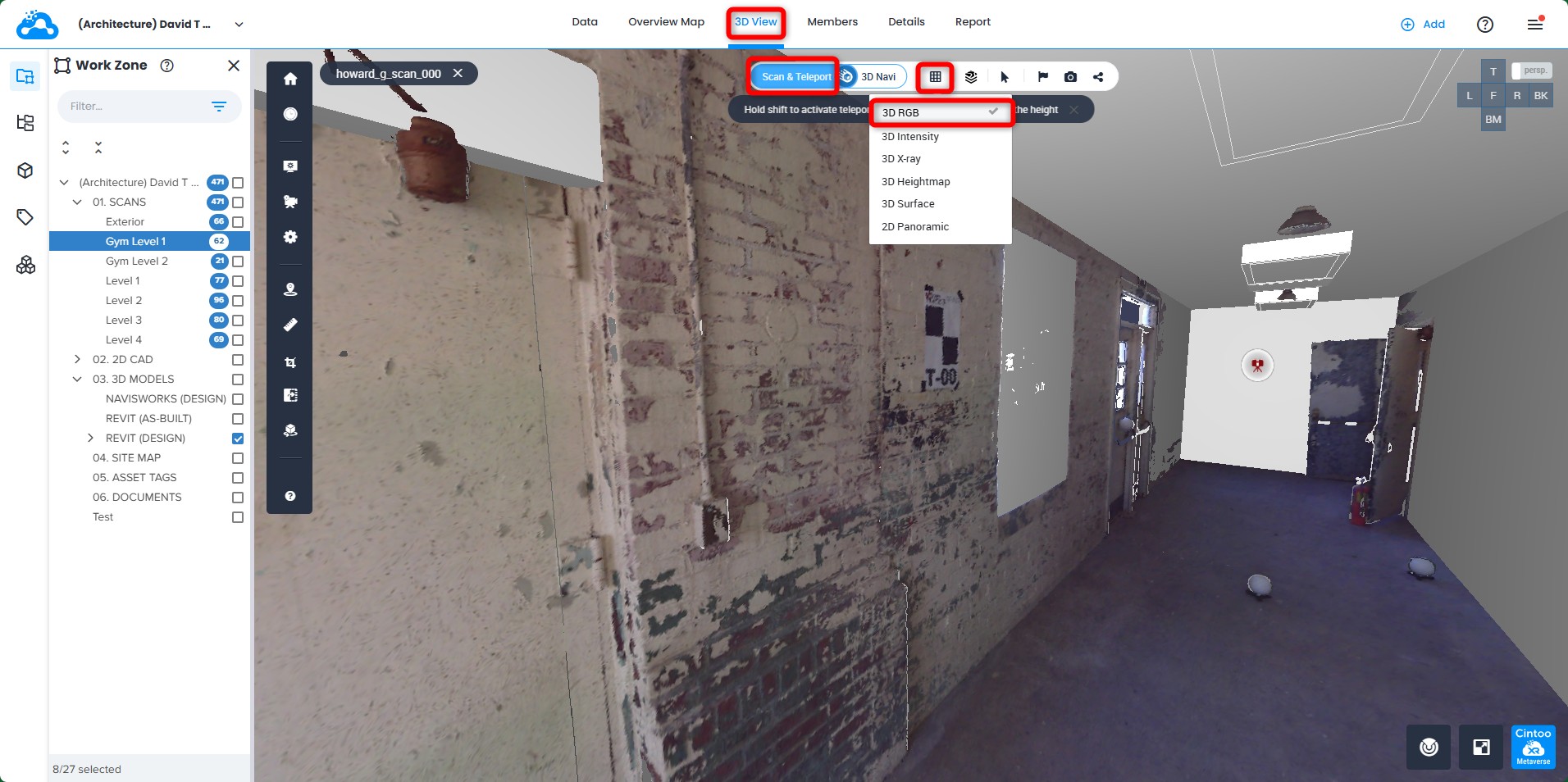 Switching to Scan&Teleport Mode for Scan Tool Comparison
Switching to Scan&Teleport Mode for Scan Tool Comparison
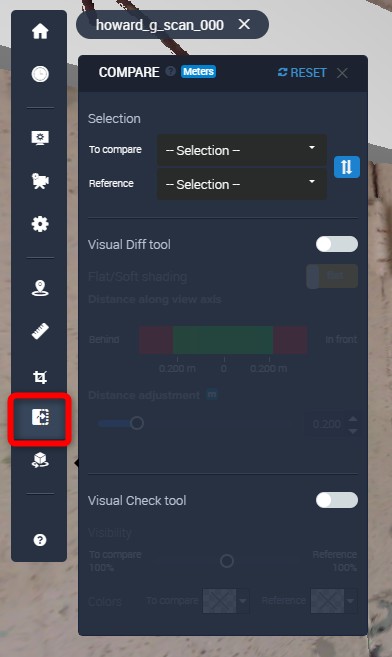 Accessing Comparison Tools in Scan Software
Accessing Comparison Tools in Scan Software
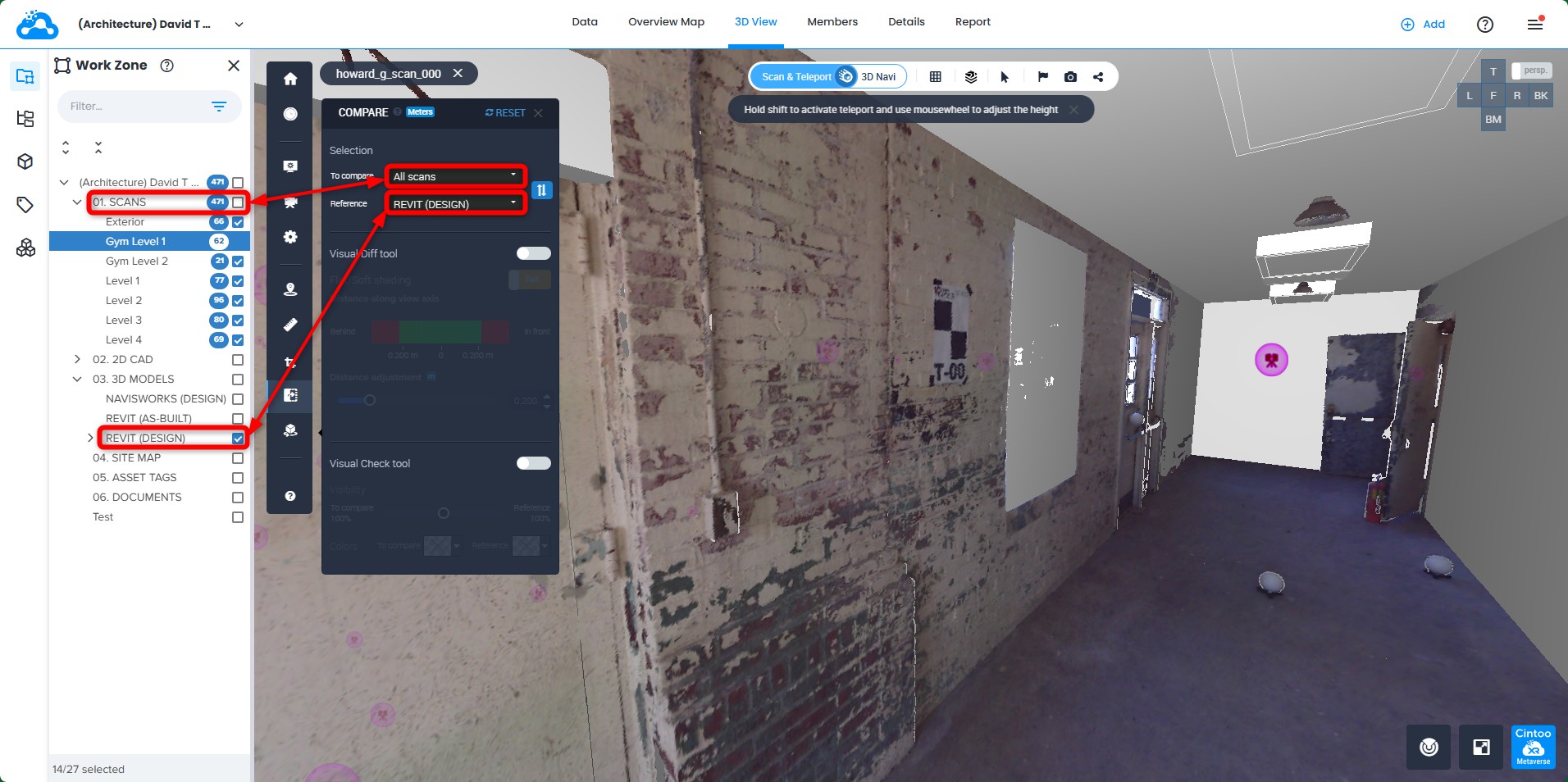 Configuring Scan Comparison Parameters
Configuring Scan Comparison Parameters
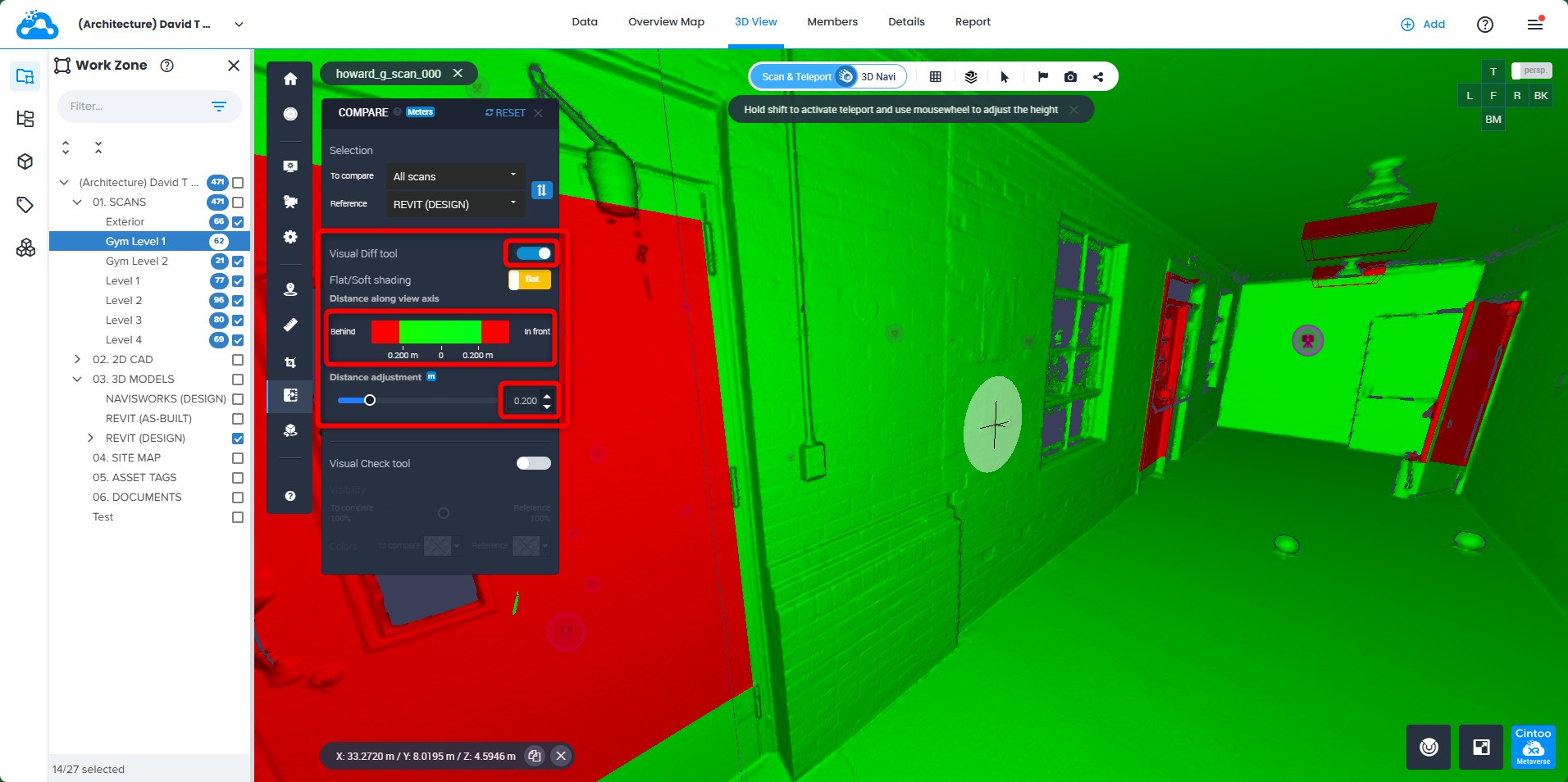 Enabling Visual Difference Tool for Scan Tool Comparison
Enabling Visual Difference Tool for Scan Tool Comparison
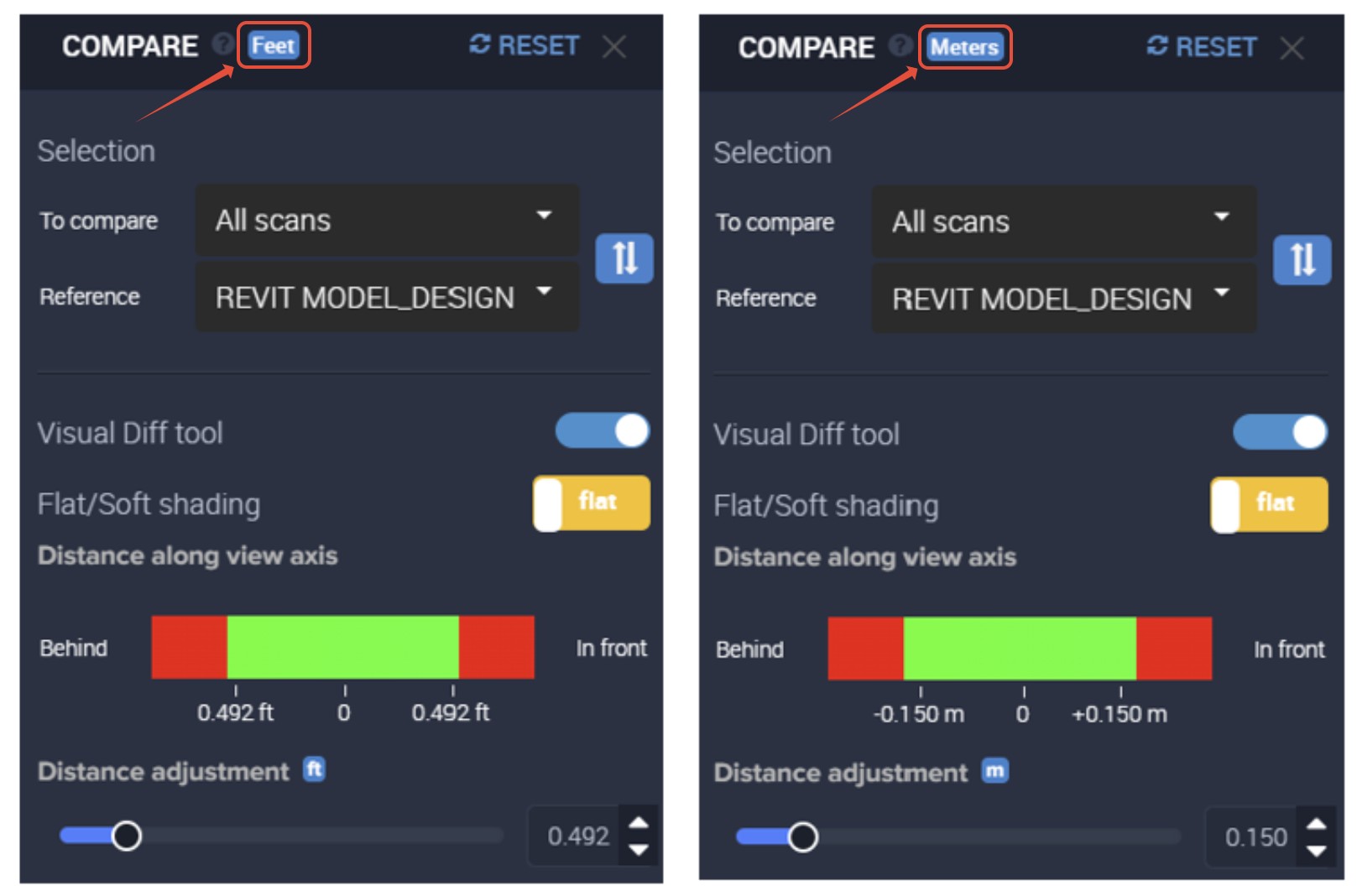 Setting Measurement Units in Visual Difference Tool
Setting Measurement Units in Visual Difference Tool
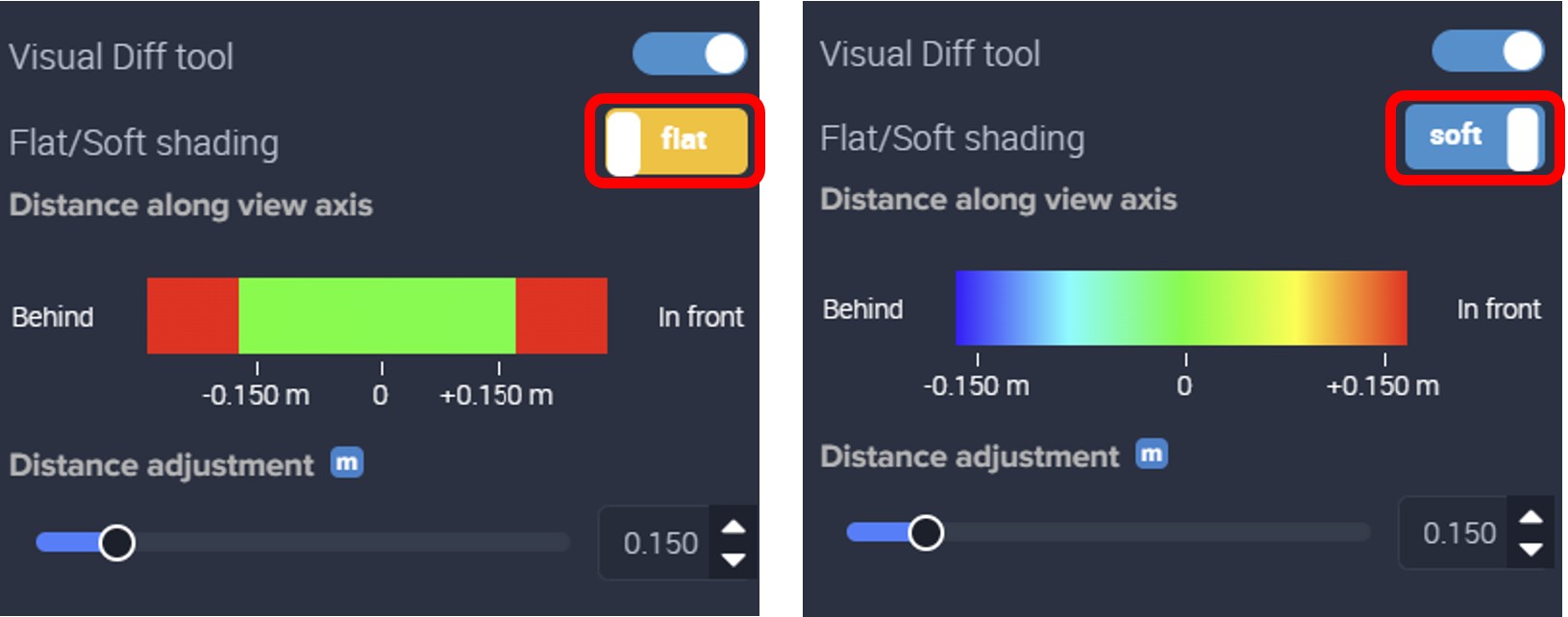 Selecting Shading Mode in Scan Tool Comparison
Selecting Shading Mode in Scan Tool Comparison
 Visual Difference Displayed in Soft Shading
Visual Difference Displayed in Soft Shading
 Adjusting Distance Tolerance in Scan Tool Comparison
Adjusting Distance Tolerance in Scan Tool Comparison
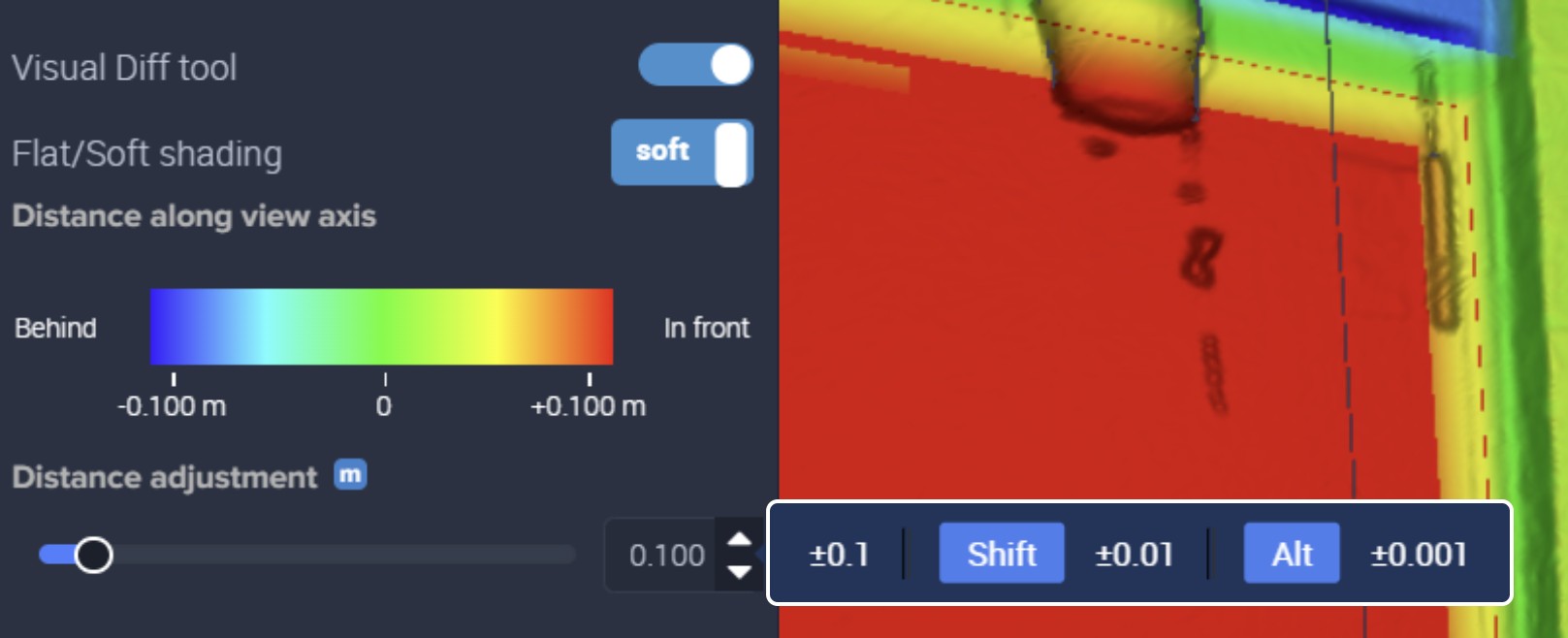 Fine-Tuning Distance Adjustment for Precision in Scan Tool Analysis
Fine-Tuning Distance Adjustment for Precision in Scan Tool Analysis
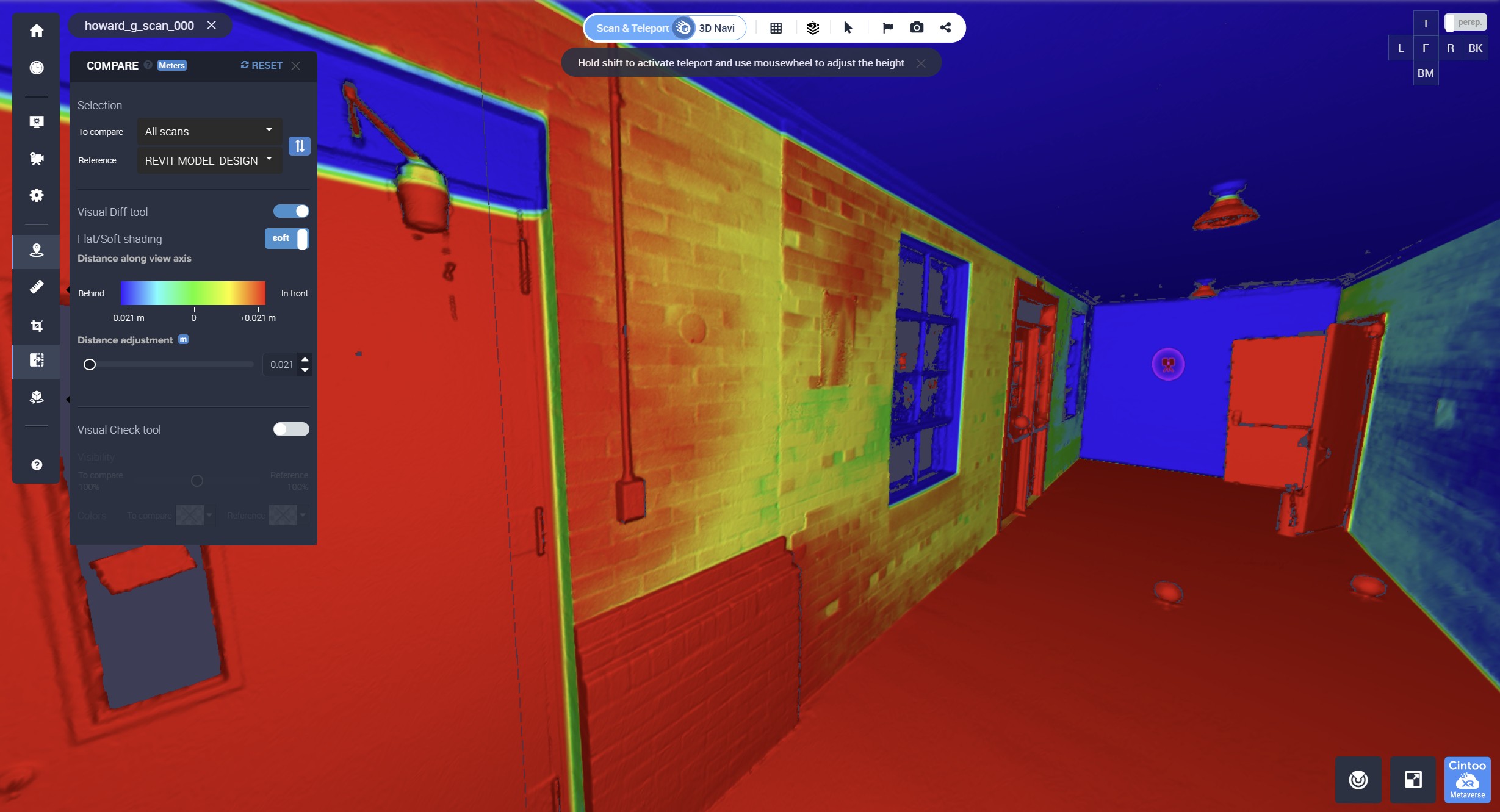 Color-Coded Visual Difference Display in Scan Tool Comparison
Color-Coded Visual Difference Display in Scan Tool Comparison
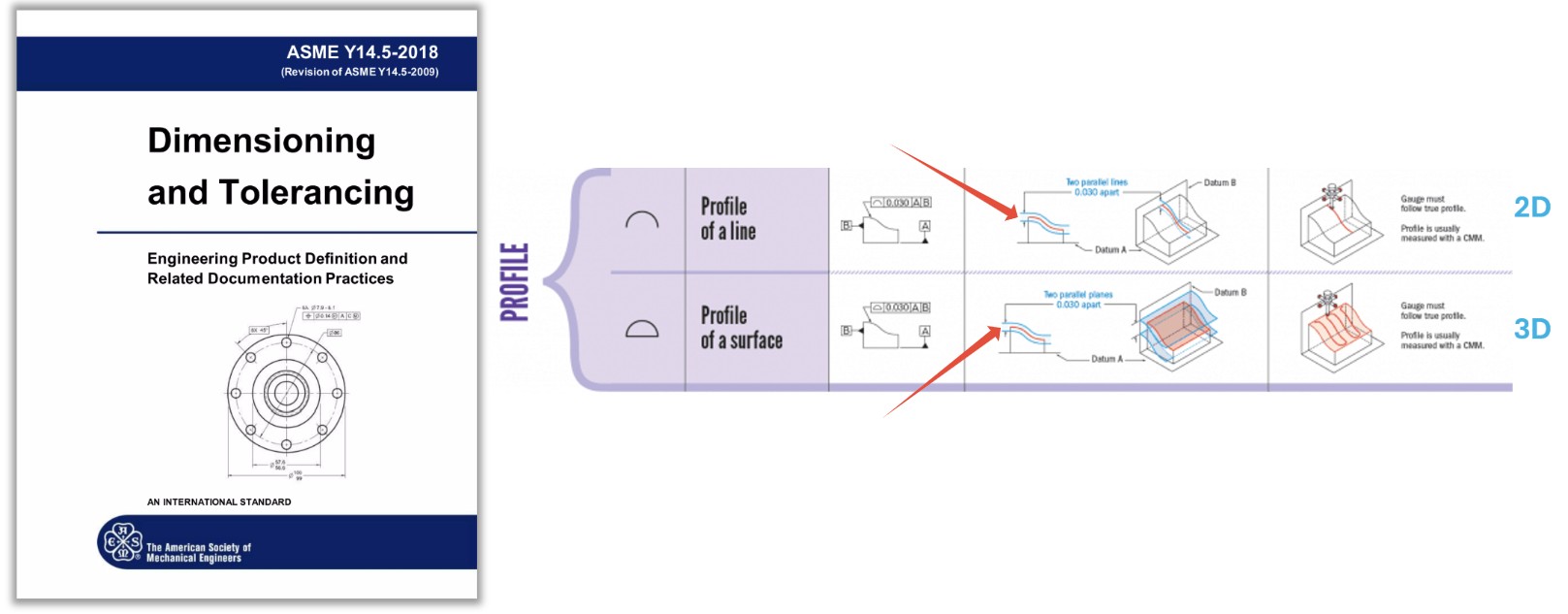 Understanding Color Mapping in Scan Tool Comparison Tolerancing
Understanding Color Mapping in Scan Tool Comparison Tolerancing
 Interpreting Color Variations in Scan Tool Data
Interpreting Color Variations in Scan Tool Data
 Understanding Distance Adjustment Color Coding in Scan Tool Analysis
Understanding Distance Adjustment Color Coding in Scan Tool Analysis
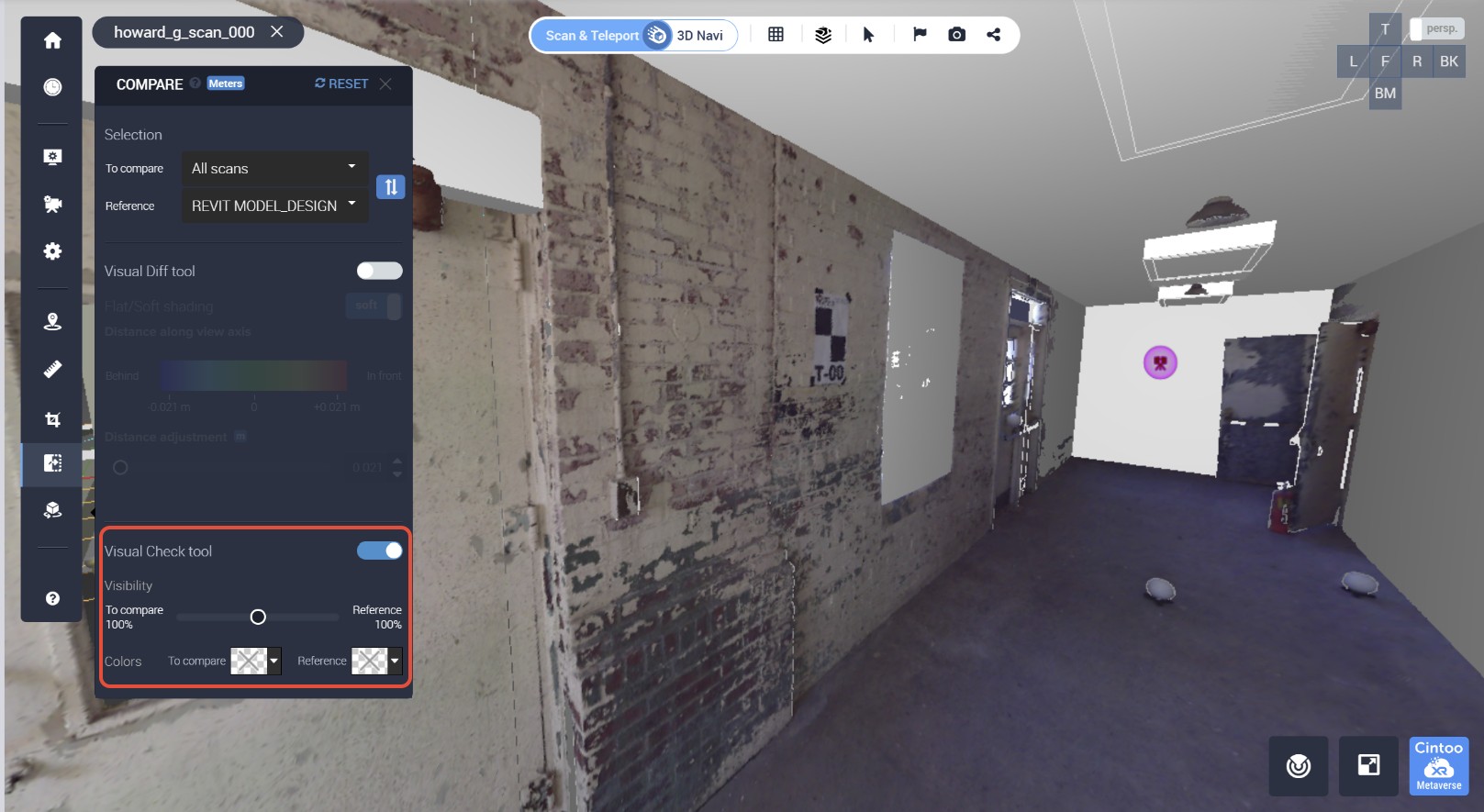 Activating Visual Check Tool for Scan Tool Comparison
Activating Visual Check Tool for Scan Tool Comparison
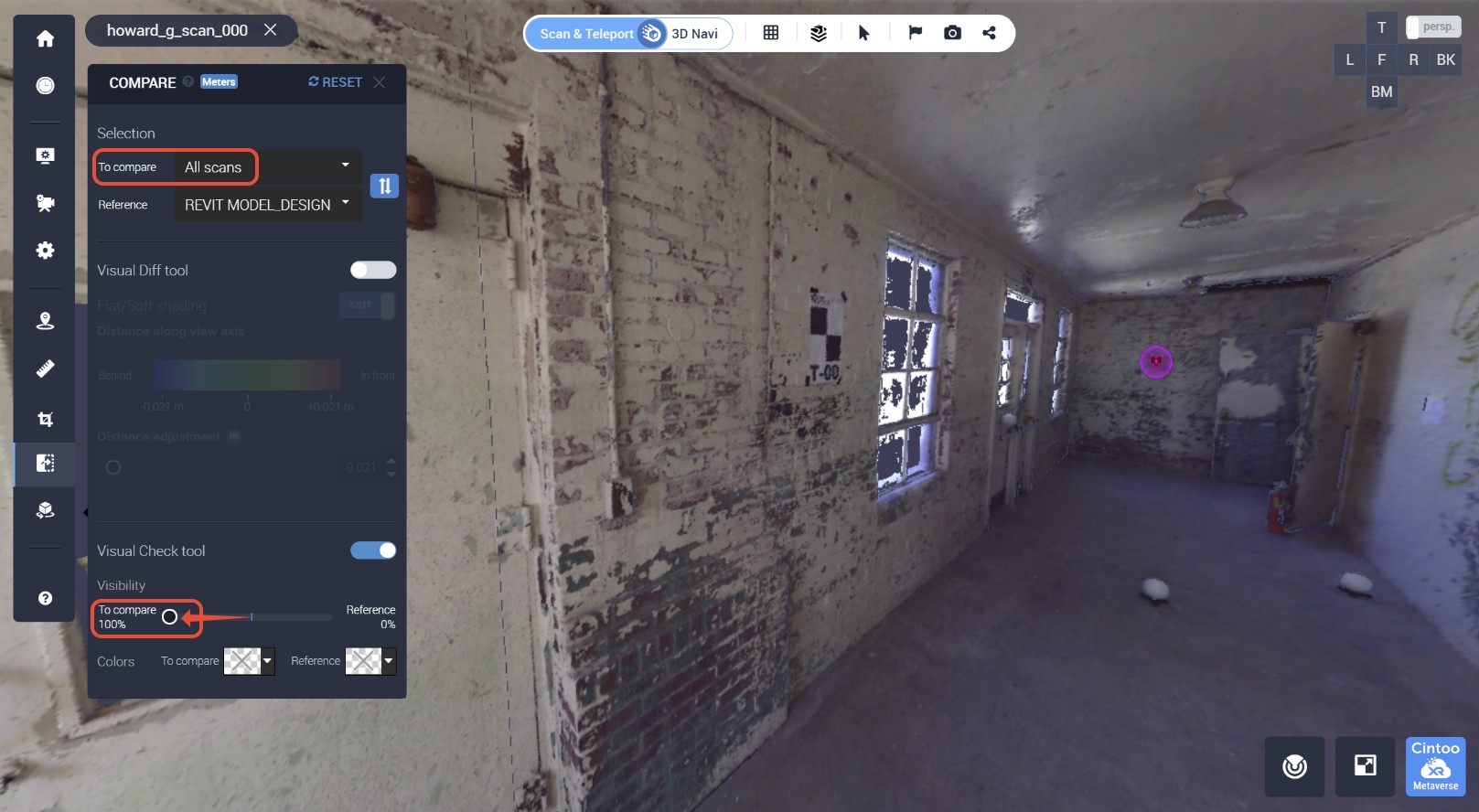 Adjusting Visibility for Detailed Scan Tool Comparison
Adjusting Visibility for Detailed Scan Tool Comparison
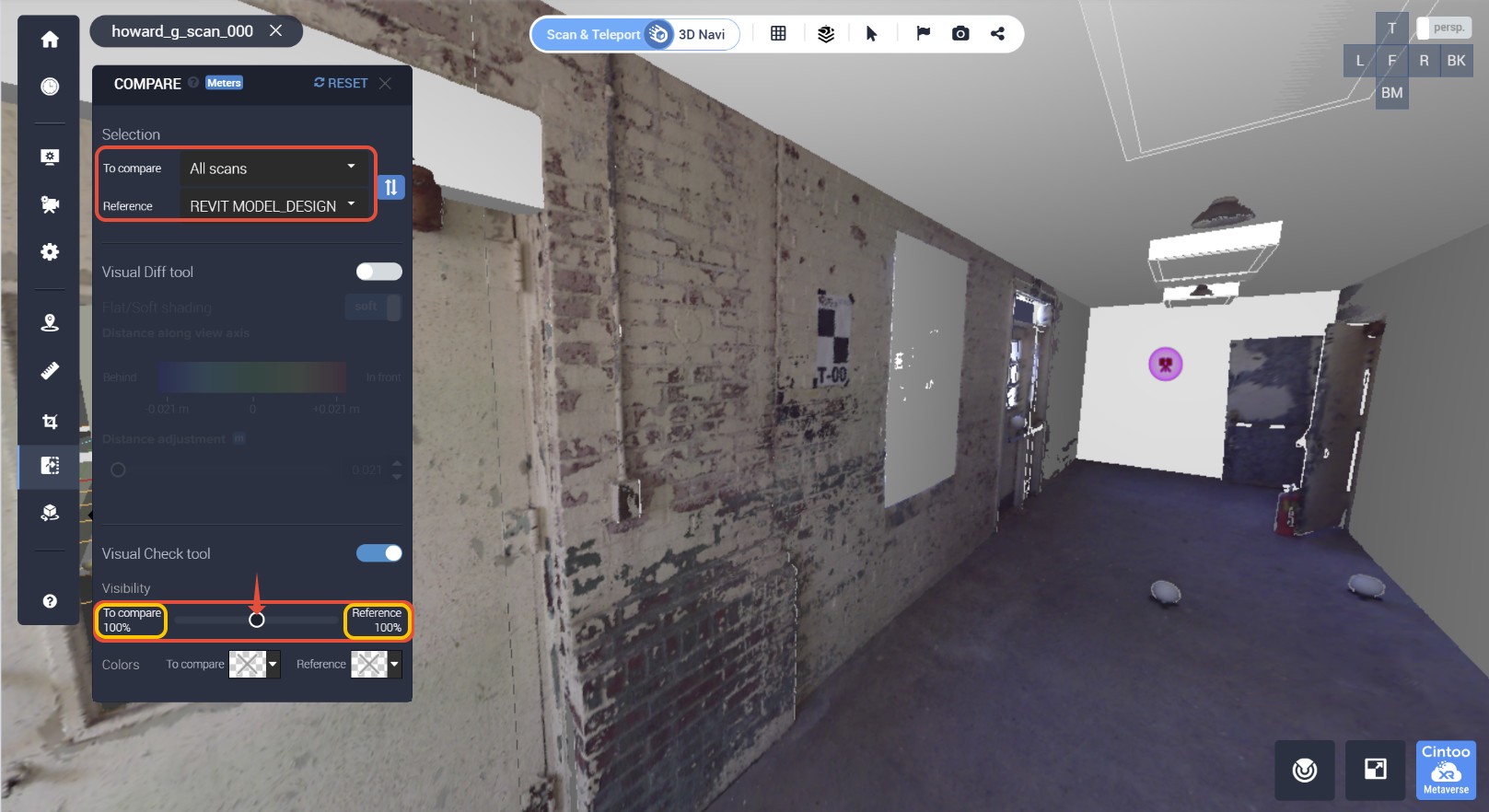 Displaying Both Data Sets in Scan Tool Comparison
Displaying Both Data Sets in Scan Tool Comparison
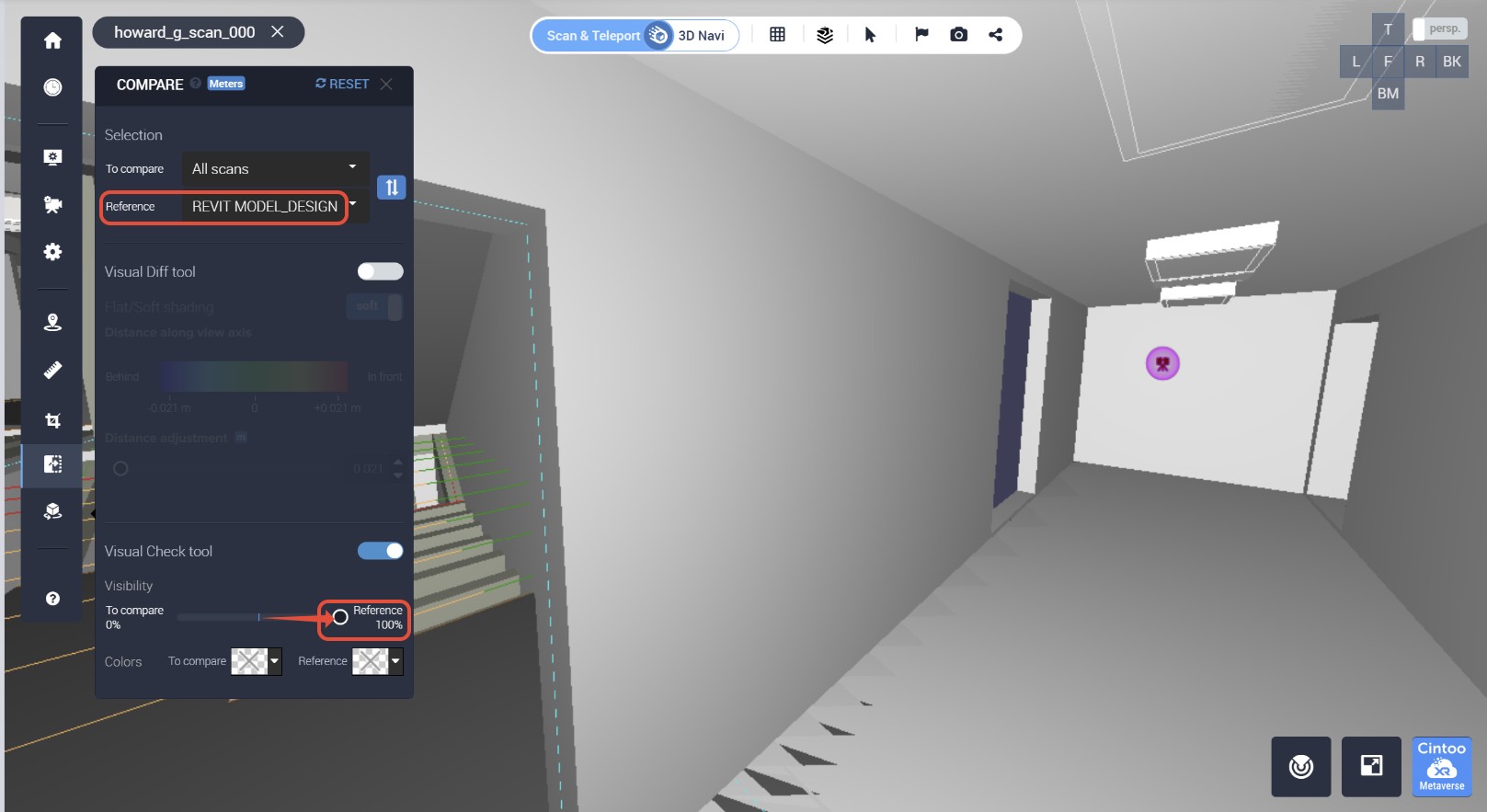 Viewing Reference Data Set in Scan Tool Comparison
Viewing Reference Data Set in Scan Tool Comparison
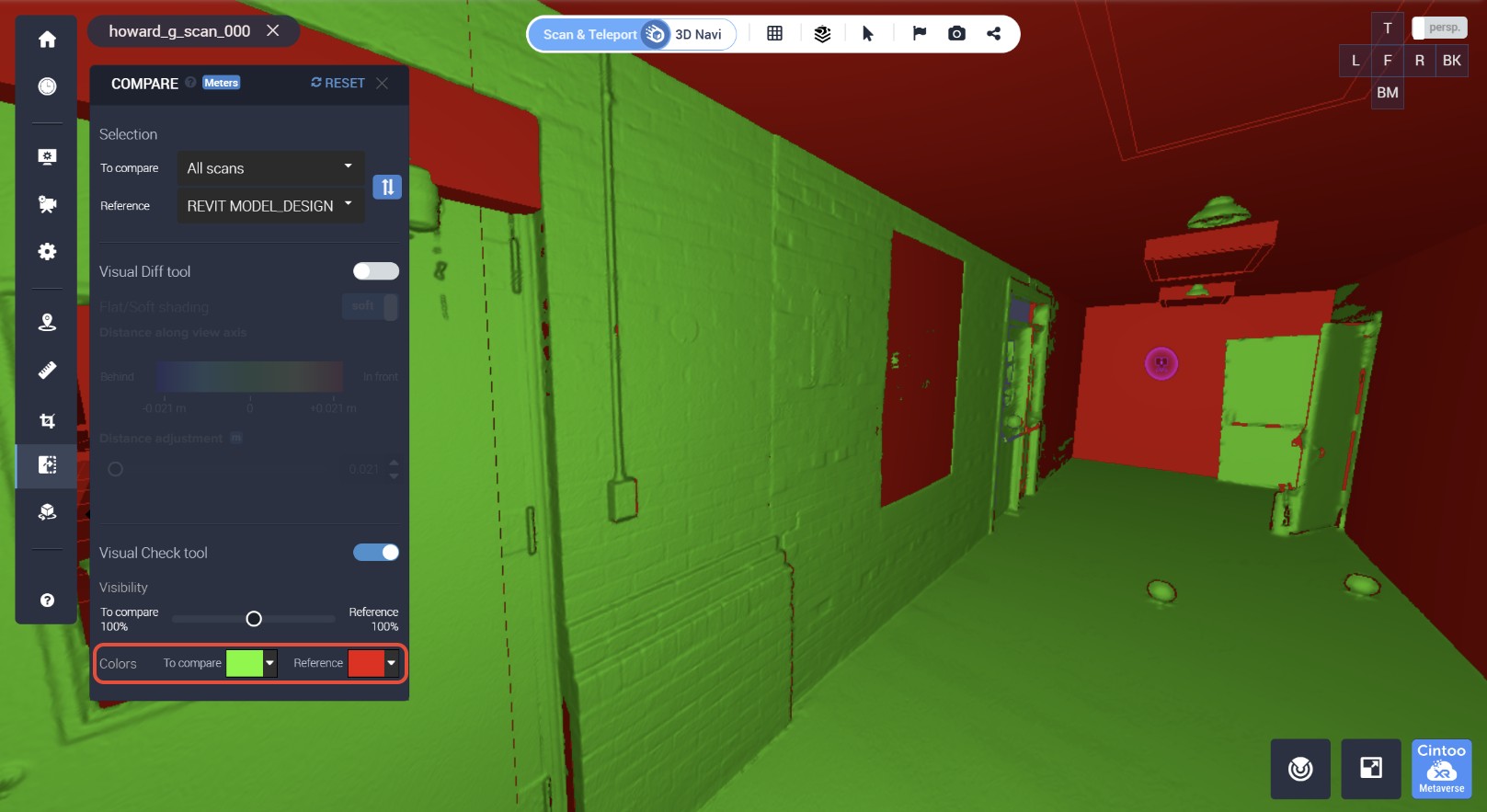 Applying Color Overrides in Scan Tool Comparison
Applying Color Overrides in Scan Tool Comparison
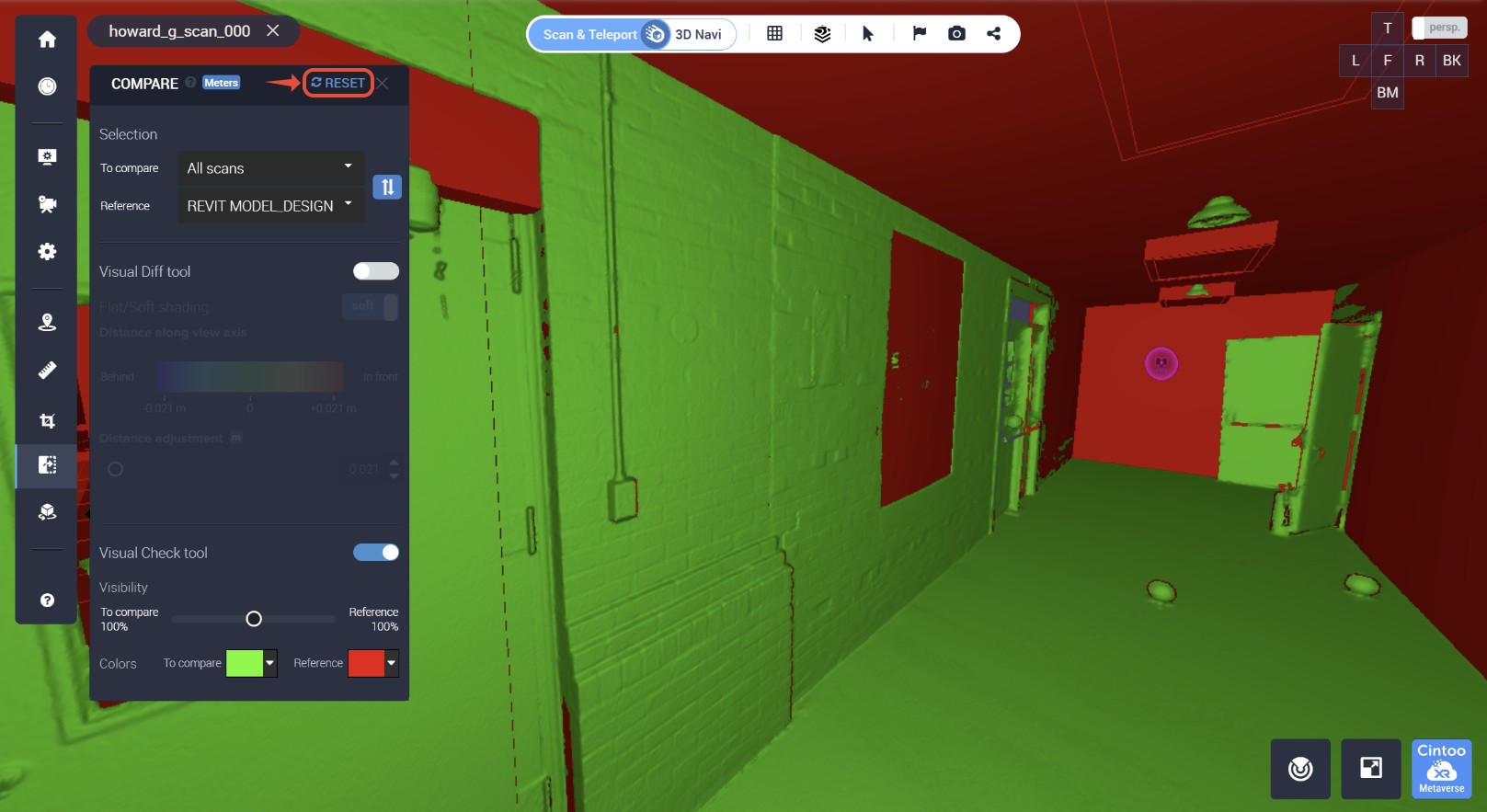 Resetting Comparison Tool Settings Before Closing
Resetting Comparison Tool Settings Before Closing
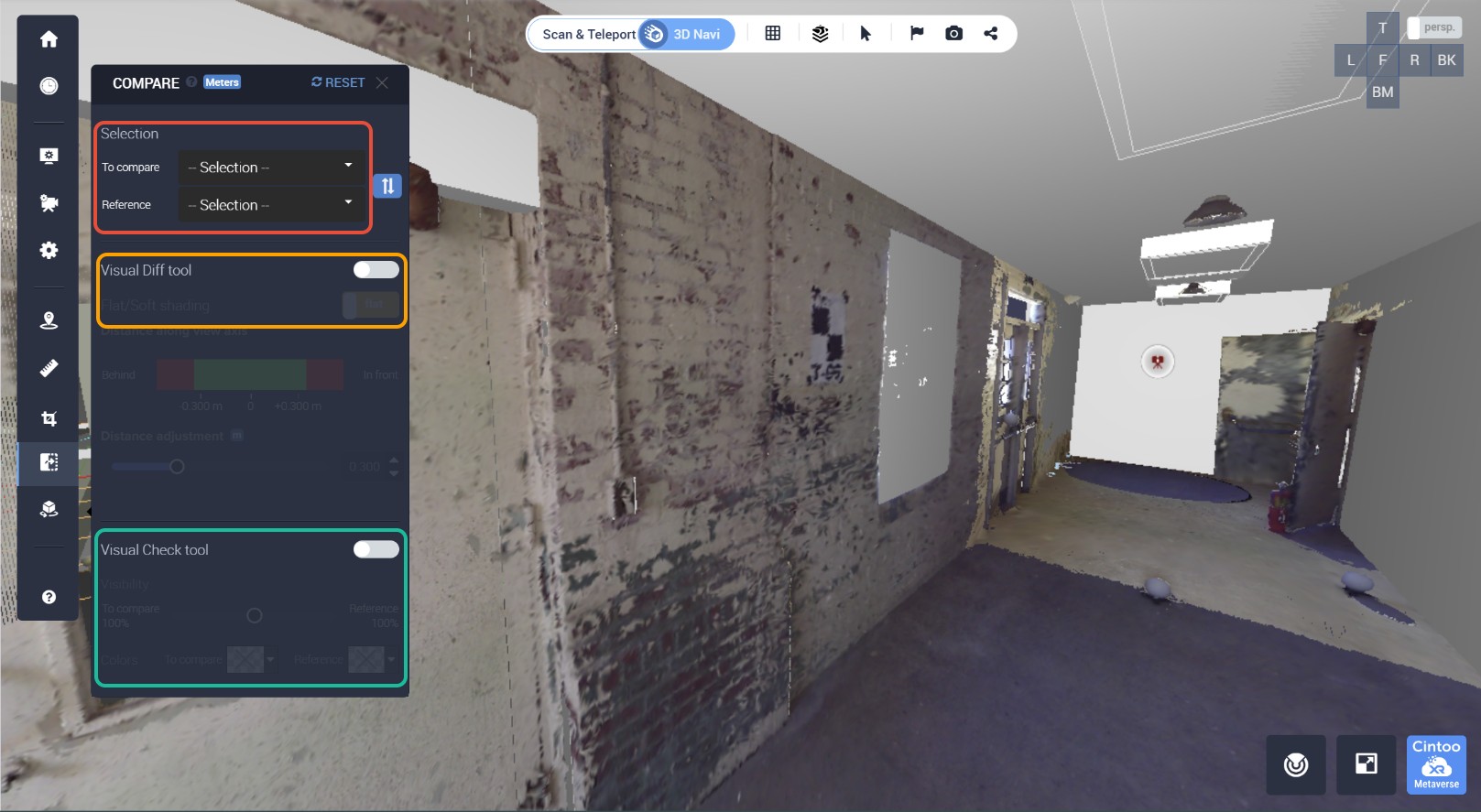 Deactivating All Buttons in Comparison Tool
Deactivating All Buttons in Comparison Tool